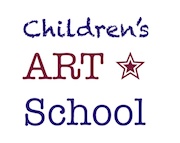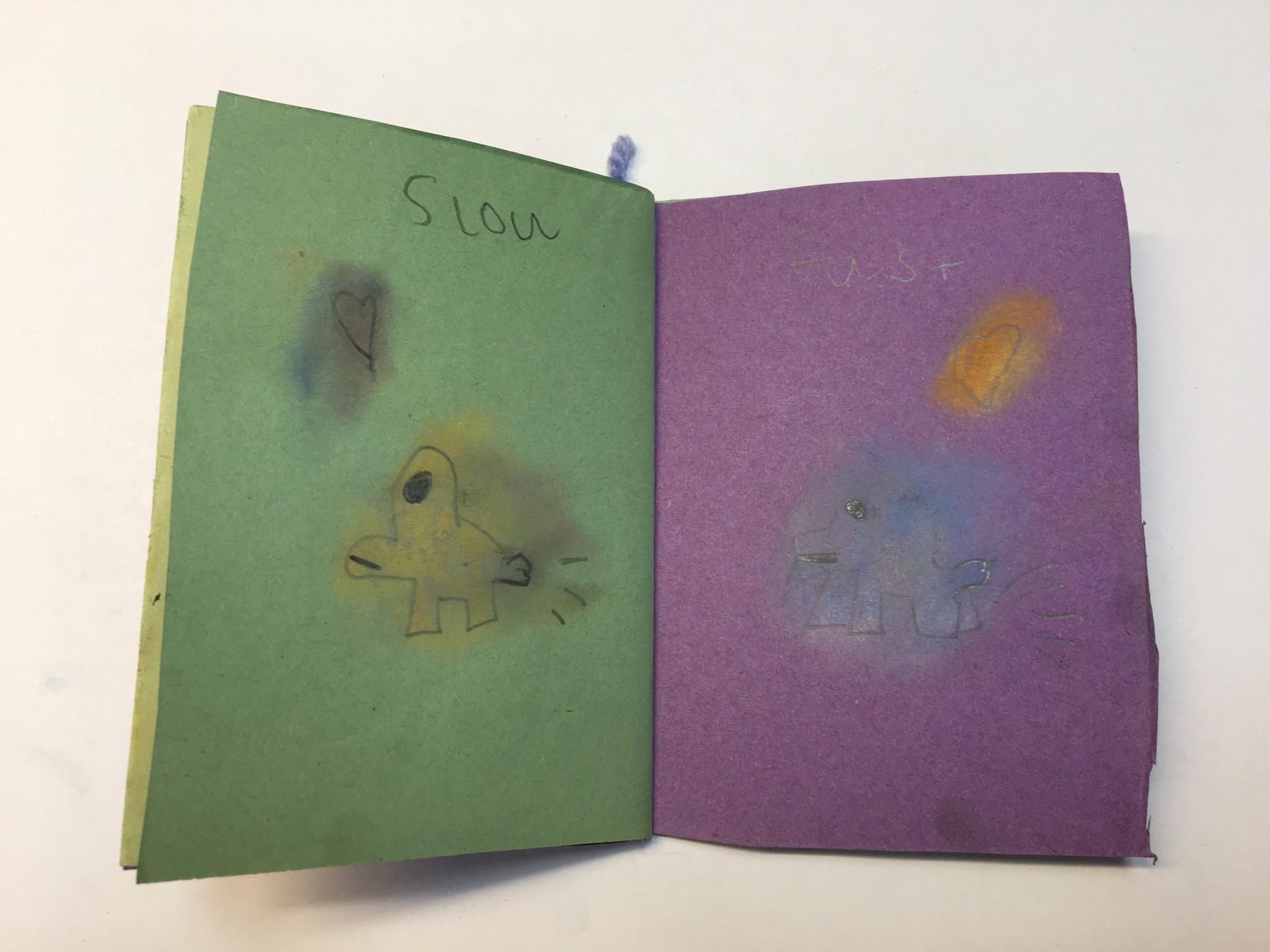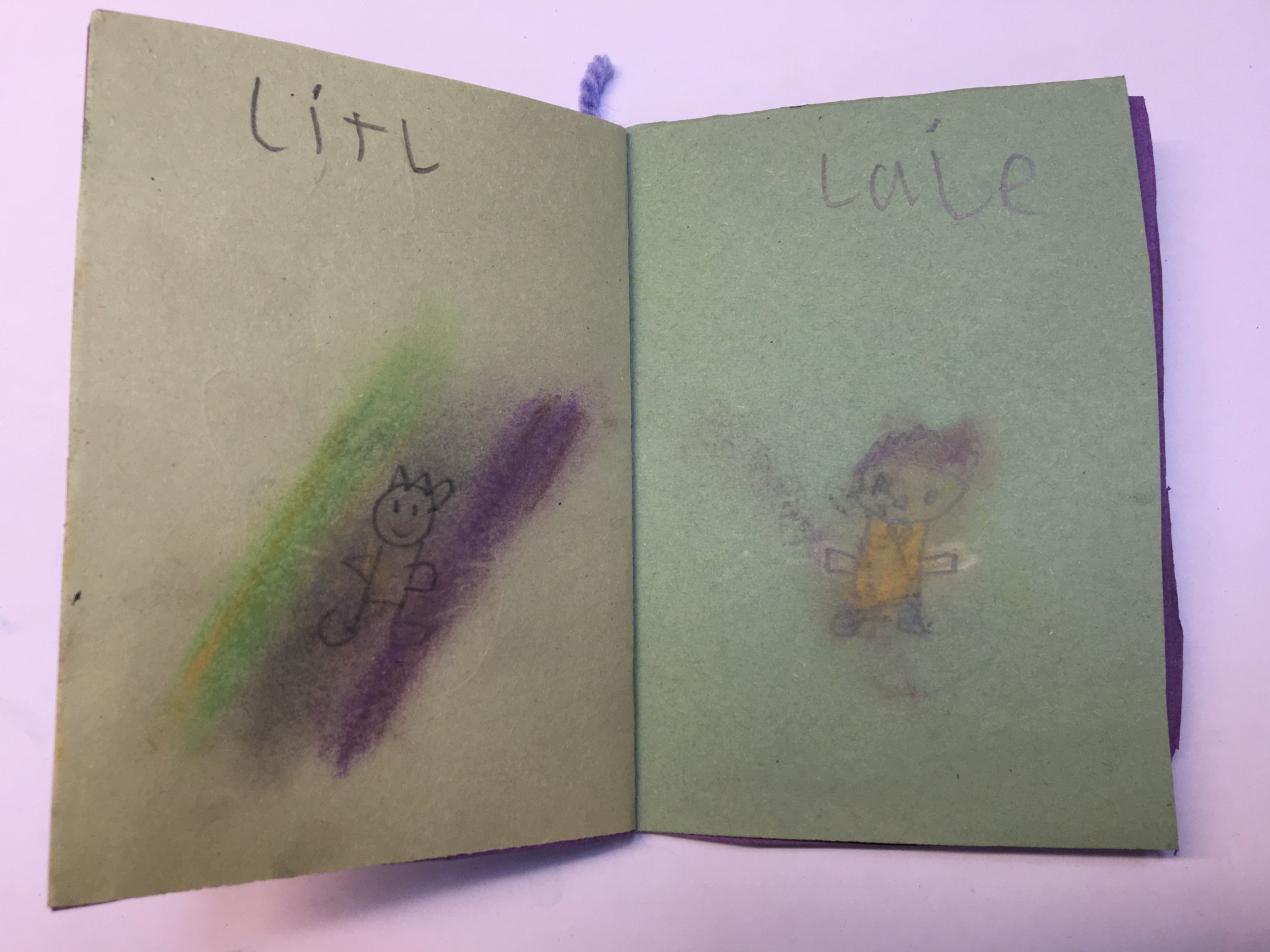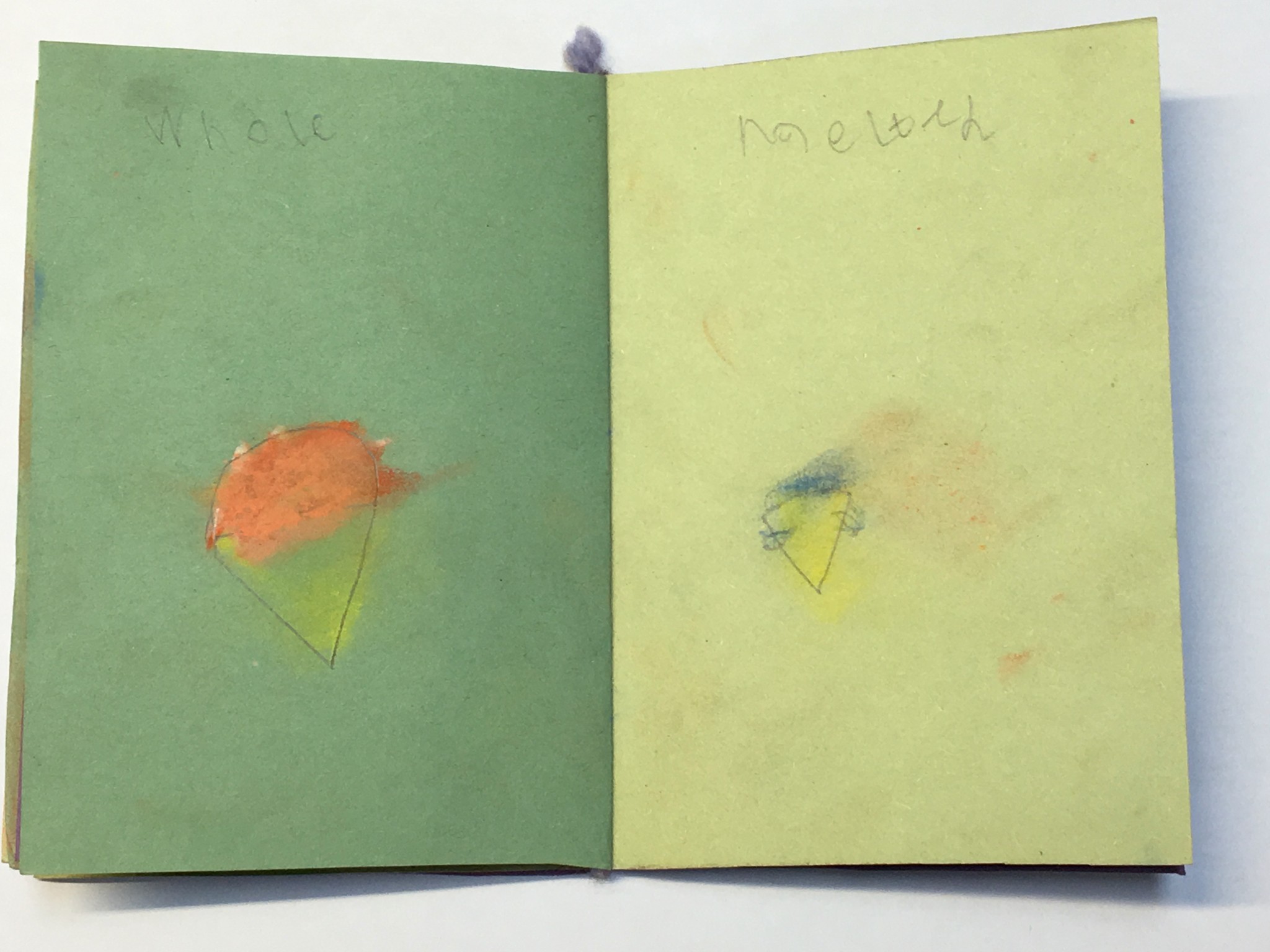The Big Small Book
Hello and welcome to Pelham Year One Artists (Y1) group update.
Where do we begin to create a language of visual expression to tell our stories?
Firstly, we need to know exactly what it is we want to say. Louise Pasquill devised this project to teach the children how to connect words and pictures. The children had to question, what would this word look like? To help, we put the words into pairs of opposites. Now, it’s easier, because the pictures will help each other to express their contrasting meanings.
The artists’ challenge: to enable the viewer to guess the pair of words expressed pictorially.
We read a beautiful book, with prose in the form of a continuous poem called “You and Me” which tells the tale of two friends, a boy and a girl, who take on different guises to express opposites.
“You’re a circle, I’m a square. You’re a tiger, I’m a bear. I’m a mountain, you’re a hill. You’re moving, I’m still”.
The artists’ chose specific vocabulary; then, to express their idea clearly, they concentrated on what it conjured up in their minds’ eye. What did they think of when they said this word?
Try it and see what you come up with. Hot, dry, smile. The beauty comes from our different interpretations of language and it’s translation. Hot could be burnt or the sun, dry could be a washing-line or a desert and smile could be a spark or some teeth!
By focussing on one word per page, the children were free to concentrate on the translation of words into pictures, without the complexity of creating a story with multiple scenarios.
Another book we studied was Pomelo. The illustrator of this book, achieved clear statements by using Pomelo in every drawing, but in a different state, depicting the word’s meaning. There were different visual guides depending on the word, such as colour, close up, use of props and dress up, but the most prominent was through use of white space. With only the character on the page, there were no other distractions, so it was easier to read the signal clearly.
As you see below, this flower shows a “Before and After” sequence. The artist has succeeded in showing us what we need to see, in order to communicate their message.
These skills are integral for Graphic Designers, who are given briefs that need to signal all kinds of messages to all kinds of people using pictures, from advertising to health and safety information.
Hot and Cold. Moving and Still.
The children chose a pair of opposite words from the board and reflected on how they wanted to achieve their results. Perhaps create a character to express their words? Everyone used a combination of animals, plants and objects to do this for them. Using simple pencil drawings enhanced with soft pastel colours, the children began to create beautiful colour books of opposite pictures.
Can the reader tell what the words are, just by looking at the pictures? Let’s see if you can guess which words the little artists are illustrating here…
My favourite was an ice cream depicted as Whole:Melted. Time to stock up the freezer!
- Posted by
 admin
admin - Posted in Children's Work, Creativity, Pelham After School Art Club, Uncategorized
 Apr, 18, 2019
Apr, 18, 2019 No Comments.
No Comments.
Archives
- April 2023
- February 2023
- September 2022
- August 2022
- May 2020
- February 2020
- December 2019
- October 2019
- July 2019
- June 2019
- April 2019
- February 2019
- January 2019
- December 2018
- October 2018
- July 2018
- June 2018
- May 2018
- April 2018
- March 2018
- February 2018
- January 2018
- December 2017
- November 2017
- October 2017
- September 2017
- August 2017
- July 2017
- June 2017
- May 2017
- April 2017
- March 2017
- February 2017
- December 2016
- October 2016
- September 2016
- August 2016
- July 2016
- June 2016
- May 2016
- March 2016
- February 2016
- January 2016
- December 2015
- November 2015
- October 2015
- September 2015
- August 2015
- July 2015
- June 2015
- May 2015
- April 2015
- March 2015
- February 2015
- January 2015
- December 2014
- November 2014
- October 2014
- September 2014
- July 2014
- June 2014
- May 2014
- April 2014
- March 2014
- February 2014
- January 2014
- December 2013
- November 2013
- October 2013
- May 2013
- April 2013
- March 2013
- February 2013
- January 2013
- November 2012
- October 2012

 07808 168 543
07808 168 543
















 Join Us On Facebook
Join Us On Facebook Join Us On Twitter
Join Us On Twitter Join Us On In.com
Join Us On In.com Subscribe to Our Blog
Subscribe to Our Blog